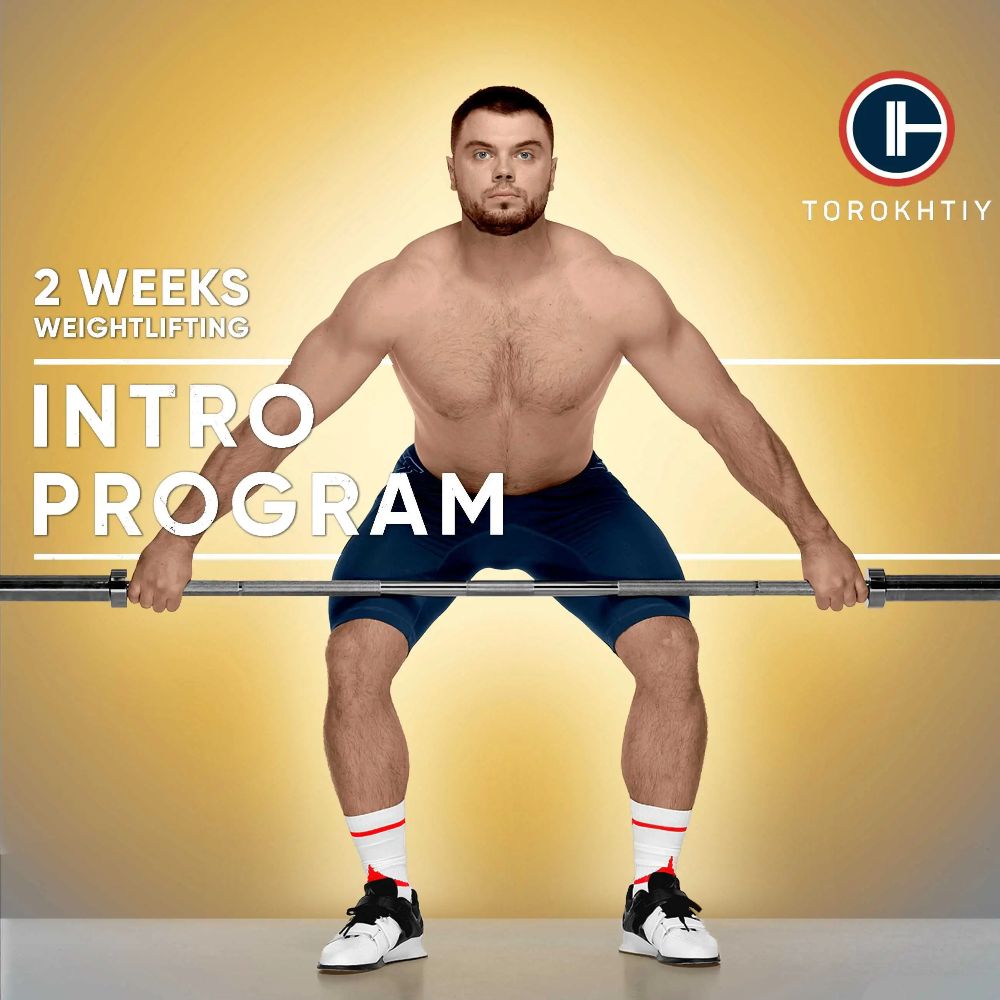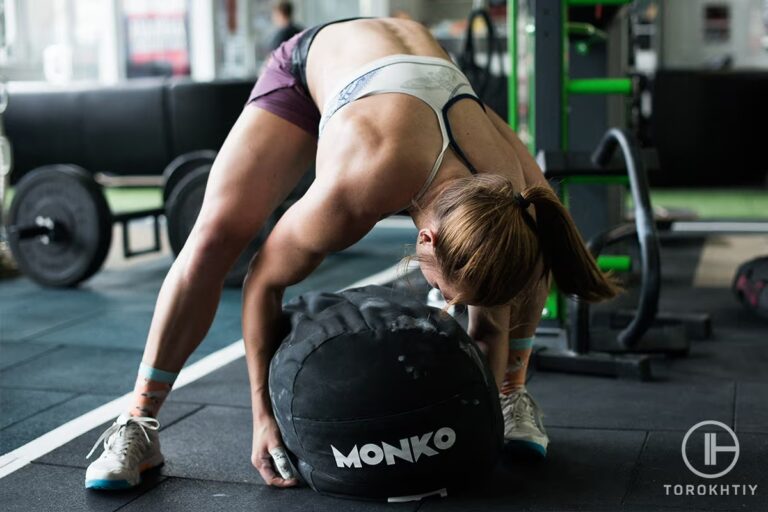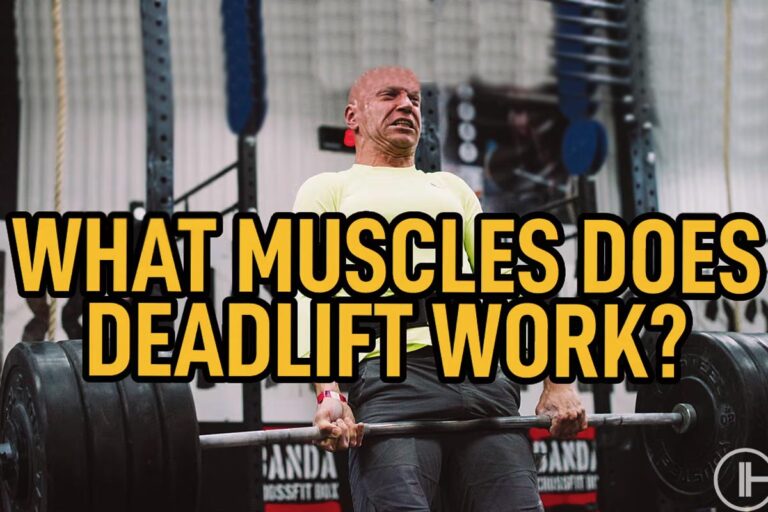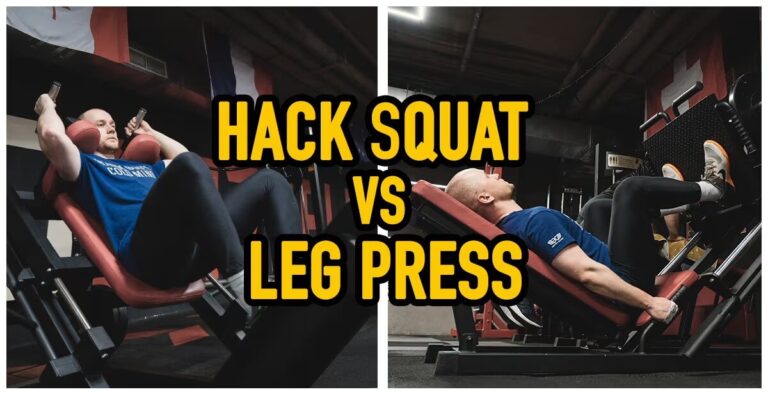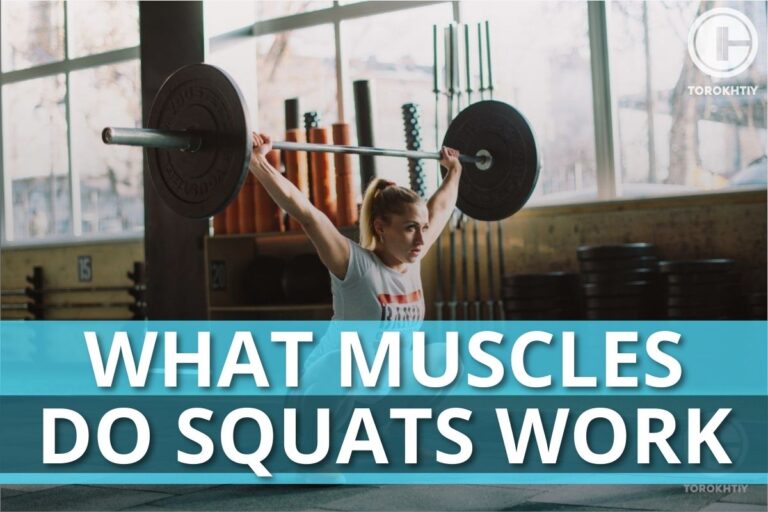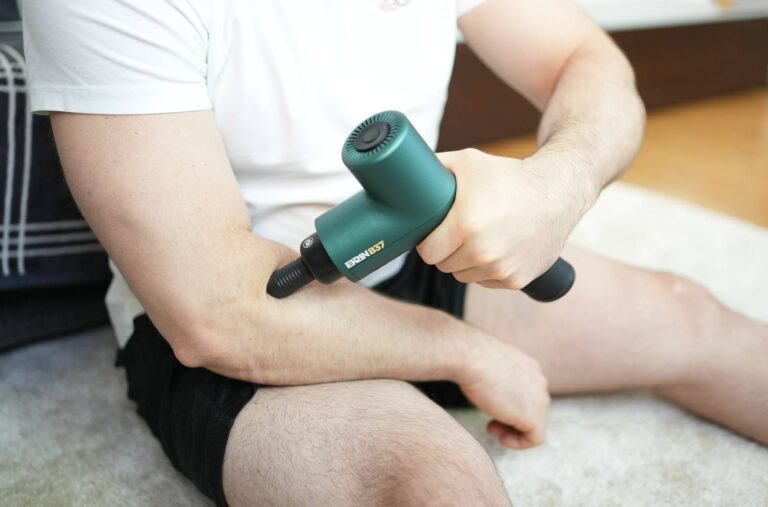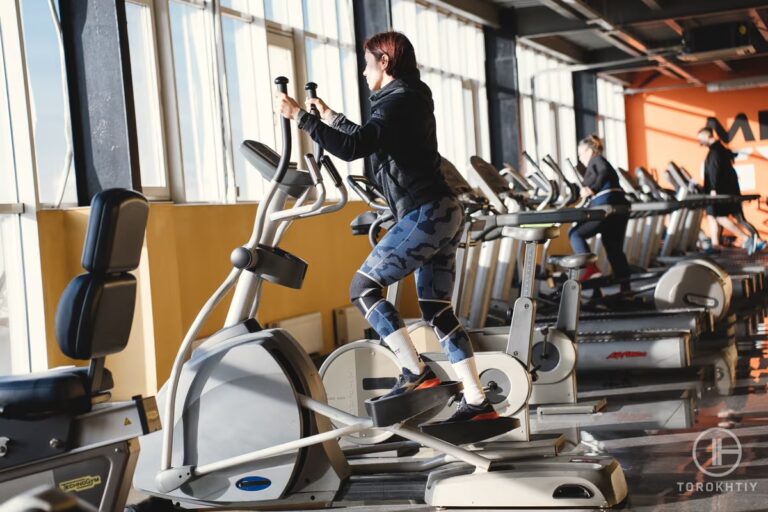Olympic Lifting vs Powerlifting
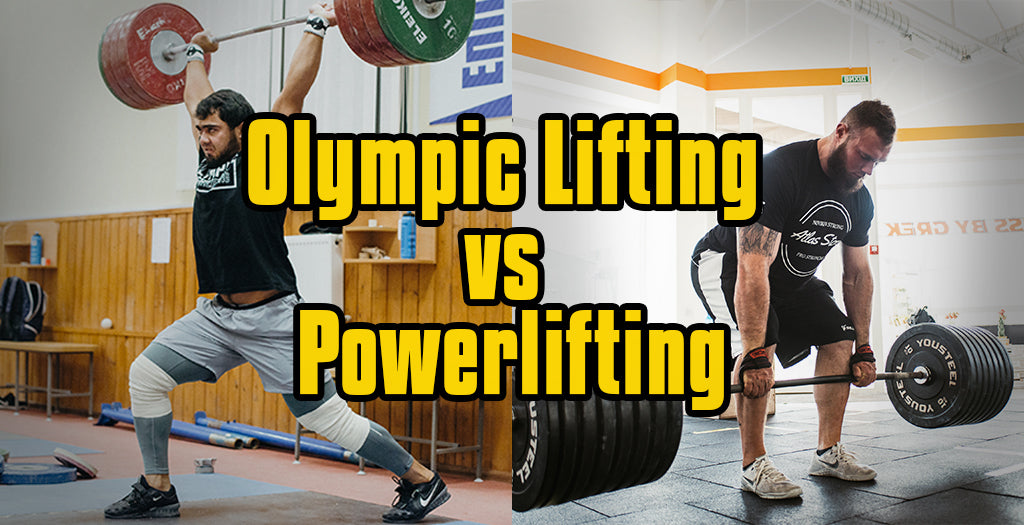
Olympic lifting and powerlifting are two strength disciplines that boost power, strength, and mental toughness. Both sports are incredibly popular and, in this article, we will understand what is the difference between weightlifting and powerlifting, their essence, features, pros & cons. Let’s go!
The quick answer is that while Olympic weightlifting is focused on the Snatch together with the Clean & Jerk, powerlifting is built on the Squat, Bench Press & Deadlift. Both lifting styles need a huge amount of all-around strength.
What is Olympic Lifting
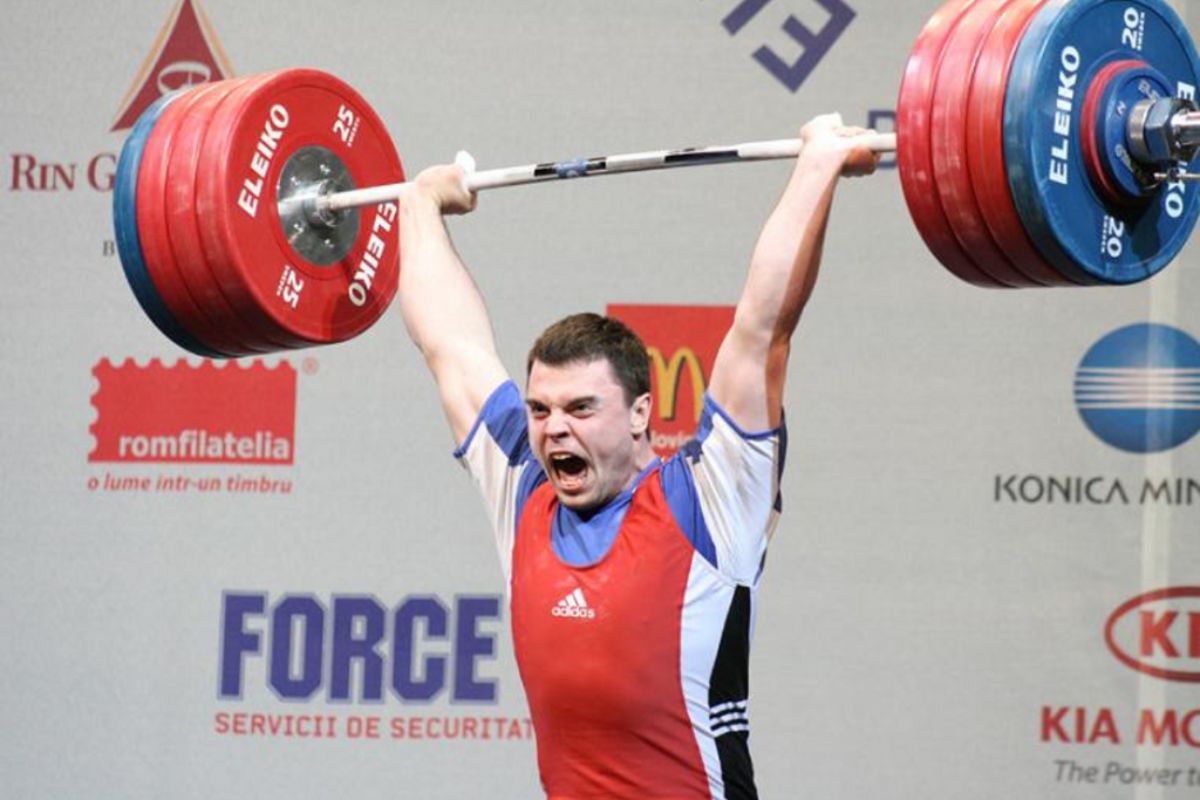
Olympic weightlifting is a kind of sport where competitors attempt to lift the biggest weights while raising a barbell from the platform to overhead. Snatch and C&J (clean and jerk) are 2 main exercises for lifting the bar overhead. The weighted barbell is raised over the head in a single movement during the wide-grip exercise known as the snatch. A complex move – the Clean & Jerk incorporates lifting weight from the floor to the shoulders (clean), then – above (jerk).
The C&J and Snatch each get three attempts from each weightlifter, with the Snatch going first. An athlete’s score is calculated as the total weight successfully raised in kg. The weight classes that athletes compete in have varied over time and varies for each sex.
The Snatch and C&J are technically difficult exercises requiring a lot of entire body coordination. Both lifts call for the development of strength, speed, power, and mobility via significant training in the gym.
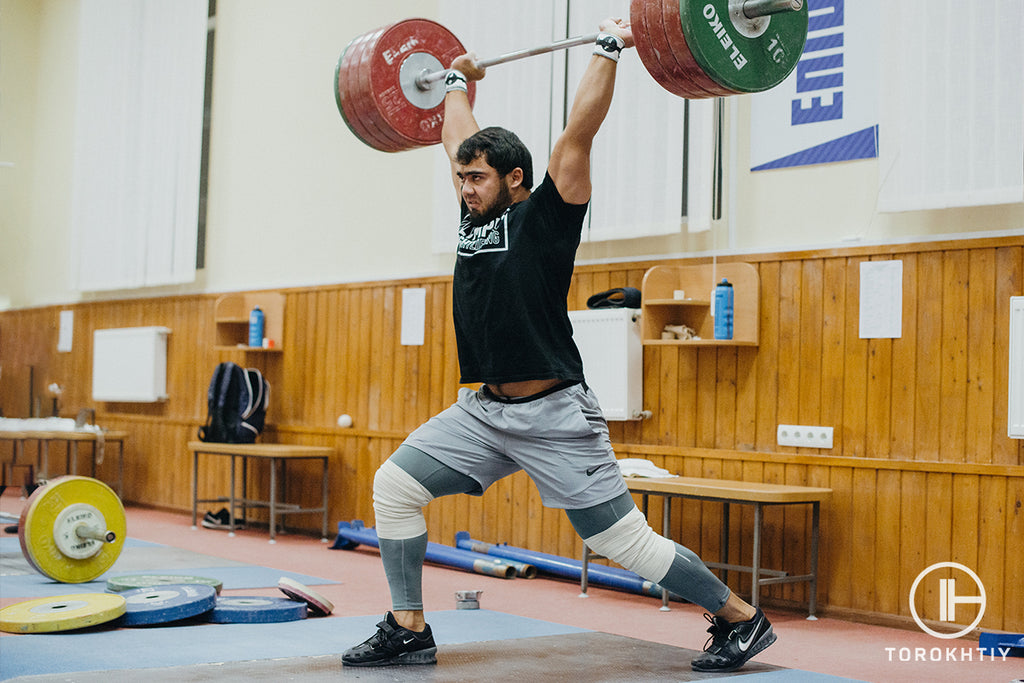
Olympic Lifting Workouts
Olympic lifting is an essential component of many well-liked fitness programs, including fitness and various strength and conditioning workouts.
The number of workouts per week can vary from 3 (for amateurs and beginners) to 9-12 for elite athletes. Traditionally, weightlifting training consists of 3 parts: warm-up, main part, cooldown.
The main part consists of 3-5 exercises (depending on the level of the athlete and the period of training). First, dynamic & power exercises are performed (snatch, clean, jerk), then strength (pulls, squats), then auxiliary.
These and other exercises may be an excellent way to mix up your workouts while still improving your power, strength, speed & coordination.
Here is a list of the main exercises from the Olympic lifting workouts:
- Power Clean
- Power Snatch
- Snatch Balance
- Clean Pull
- Snatch Pull
- Front Squat
- Back Squat
- Push Jerk
- Snatch Push Press
- Good Morning
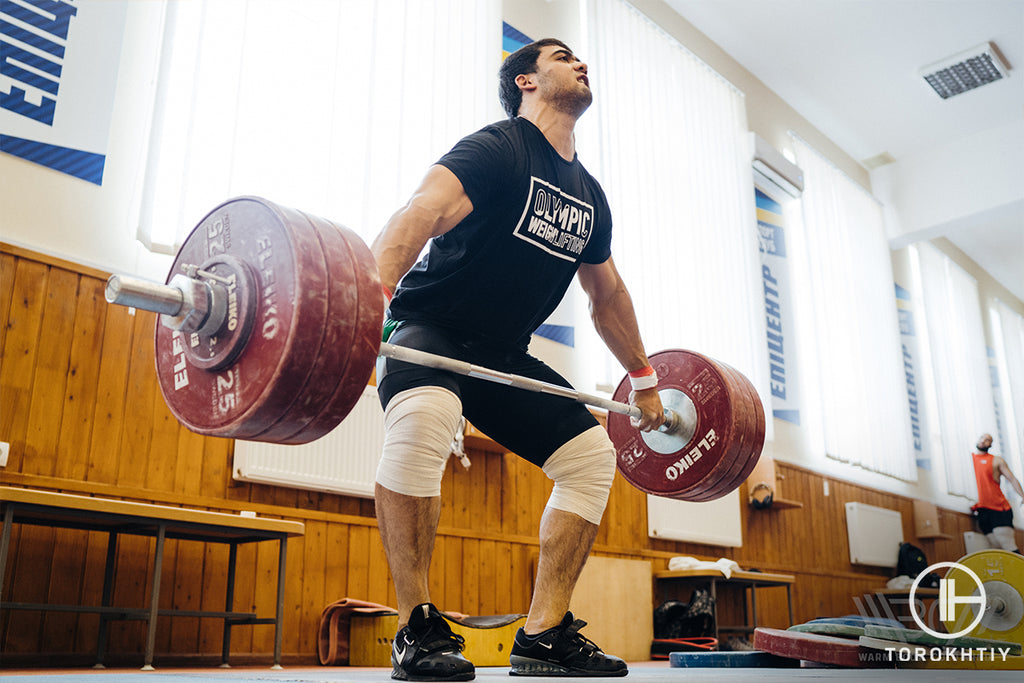
Olympic Lifting Pros & Cons
Olympic lifts could be one of more divisive subjects when chatting with strength trainers. While some strength experts are adamant that Olympic lifts are the best way to improve athletic performance, others are completely opposed to the lifts.
First things first: the Snatch and the C&J are the only two legitimate Olympic lifts. However, the phrase “Olympic lifts” is frequently used to refer to several versions of these exercises. Let’s start by examining some of the main benefits and drawbacks of including Olympic lifts into your program.
The Pros
- Develops power
- Similar movements to sprinting & jumping
- Transfer of power from lower to upper body
- Develops coordination & mobility
The Cons
- Extremely complex movements
- Require outstanding ankle, hip, and t-spine
- It’s tough on the front rack
These are some of the main benefits and drawbacks of mastering Olympic lifts. With excellent instruction and a tenacious approach, the drawbacks are frequently overpowered.
What is Powerlifting
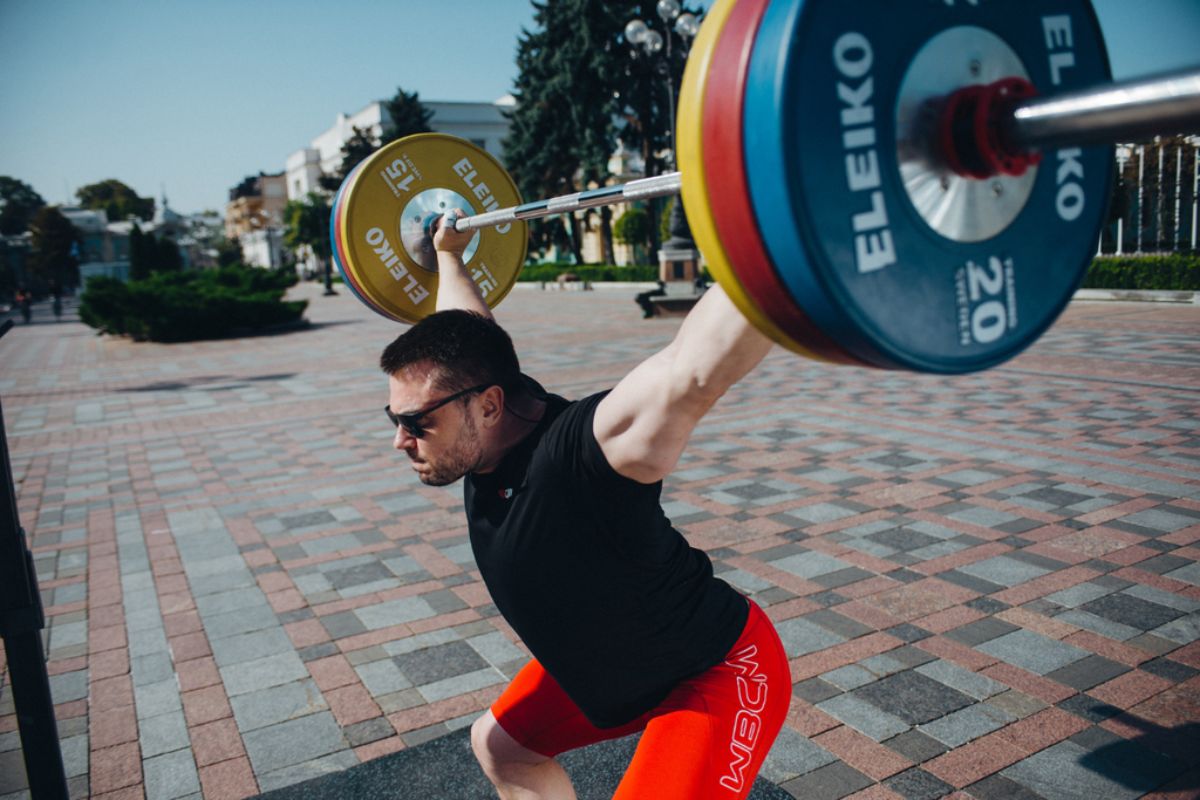
Squatting, Bench Pressing, and Deadlifting are the three lifts that make up the strength sport known as powerlifting. It includes the athlete trying a max weight 1 rep lift effort using a bar, just like in Olympic weightlifting.
Lifts may be executed either equipped or unequipped during competition. Equipment here alludes to a special bench shirt, a squat/deadlift suit, or shorts. Knee wraps can be used in both unequipped & equipped categories in some federations, but in some it is not allowed. Wrist wraps, belts, knee sleeves, and specific weightlifting and other footwear can also be used.
All across the world, competitions are held. Since 1984, powerlifting has become a Paralympic sport (only Bench Press), and it is a part of World Games under the IPF. Other federations that operate independently of the International Powerlifting Federation have also approved local, national, and worldwide events.
Powerlifting Workouts
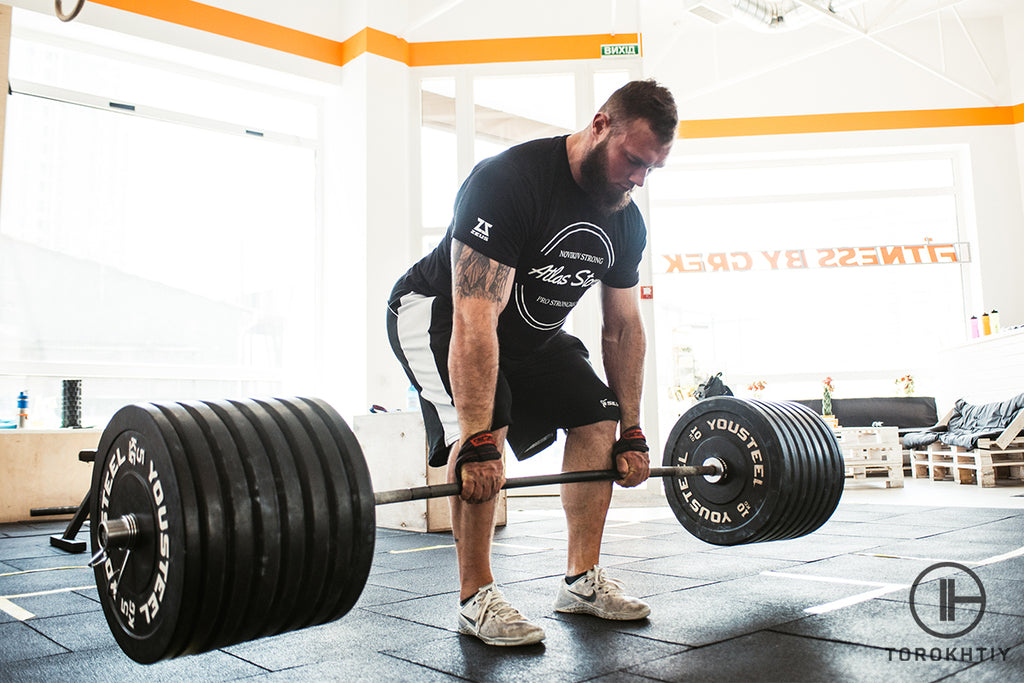
Workouts for Olympic lifting vs powerlifting are distinct from one another. The drills themselves differ significantly from weightlifting movements.
More volume and intensity are also required in powerlifting programs. Many powerlifters perform three to five sessions per week; they also benefit from GPP work, which boosts work performance and enables higher volume without taxing the nervous system.
The average workout lasts over 1-1,5 hours. To reach your physical limits and then perform some more effort during a workout will require a lot more time. Therefore, depending on the volume of the workout, it can be longer or shorter. Overall, it will change depending on the volume of the session and if the lifter is performing a peak effort lift. And on certain days, the breaks in between sets take far longer than they do in an Olympic weightlifting workout.
Powerlifting Pros & Cons
The Pros
- Primary focus on strength
- Emphasis on good form
- A narrow, defined focus
The Cons
- Focused too heavily on maximal strength
- Very specific technique and form requirement
- Too focused on the squat, bench, and deadlift
Olympic Weightlifting vs Powerlifting Comparison
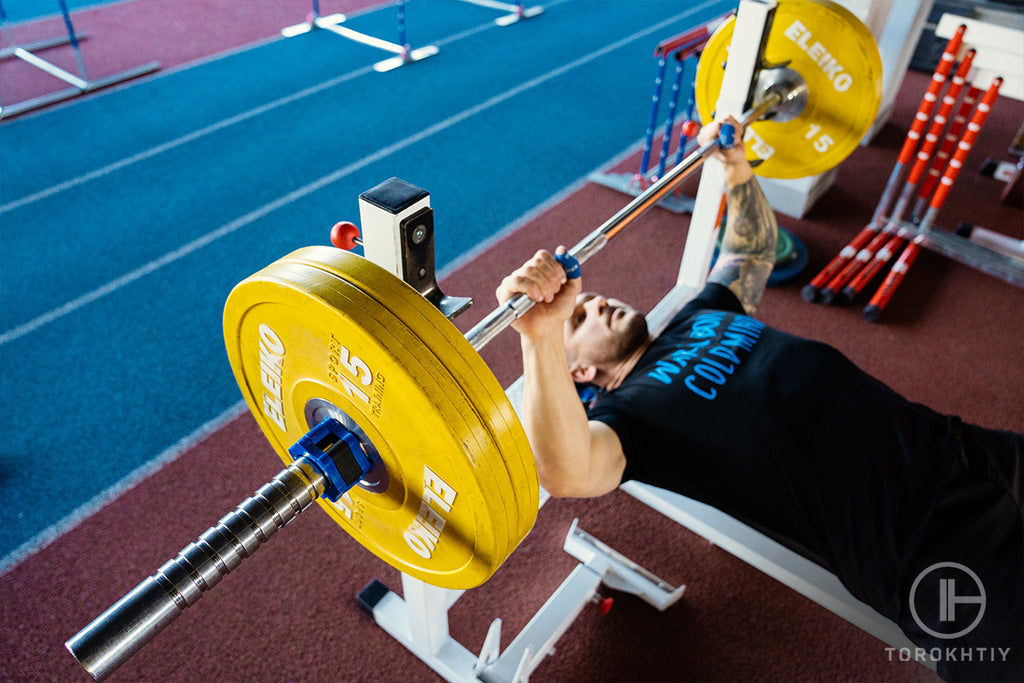
Although the differences between the two strength sport genres will be obvious to a professional, many inexperienced lifters may find the contrasts and nuances challenging to grasp.
So, what distinguishes Olympic lifting from Powerlifting?
The Squat, Bench press & Deadlift are the foundational movements for powerlifting, whereas the Snatch and Clean & Jerk are the movements for Olympic weightlifting. Both lifting techniques need a huge amount of all-around strength.
However, because to their specialization in certain lifts, they have a number of differences:
In order to do the lifts correctly, Olympic weightlifting often has a higher demand for flexibility than Powerlifting. Several of the most mobile & flexible Olympians are weightlifters, with hip & shoulder mobility being especially crucial.
The Olympic lifts are way more explosive and technically difficult than the power lifts. When compared to power lifts, which are quicker to pick up, Olympic lifting technique might take many months to become somewhat natural. Of course, there are technical nuances to both sorts of lifts that might take many years to master.
In order to keep their technique fresh, Olympic lifters typically train more frequently than powerlifters (elite athletes may exercise every day). Less recuperation time is necessary between training sessions since the weights employed are often less than in the power lifts.
For the Bench Press, powerlifting tends to develop more chest strength than what Olympic lifters need.
Now that you are aware of the fundamentals, let’s examine powerlifting vs weightlifting in more detail and discover what makes them unique.
The Big Picture
Powerlifting’s general objective is to build strength by lifting the largest weight possible, while Olympic lifting’s overall objective is to develop power by lifting heavy objects overhead. This is not to say that Powerlifters cannot be explosive or have excellent coordination, but Olympic weightlifting will offer you a greater chance to develop these traits.
The Quantity of Lifts in Competition
The quantity of exercises that each lifting technique is focused on is one of the key distinctions between them. There are three primary lifts used in powerlifting: the Squat, Deadlift, and Bench Press. Snatch and Clean & Jerk are the two basic lifts used in Olympic lifting.
Workout Duration
A pro powerlifter may train for two to three hours each day on average, focusing on technique, the major three exercises, and auxiliary lifts. Weightlifters need more workouts per week but less time each workout (around a few hours). Pro Olympic weightlifters will occasionally train twice daily, with each session concentrating on a different physical quality, such as a technique or strength sessions.
Speed
Powerlifting focuses on the maximal weight, therefore regardless of how quickly it is done, the objective is to raise as much weight. Olympic movements are performed at a significantly higher speed, which calls for more precision in technique.
Technique Details
In powerlifting, you must demonstrate your strengths, and the winners are often powerful lifters with high muscular potential. Technique and awareness of little details, such as foot & hand foot positioning, are necessary for Olympic lifting. When doing Olympic lifts, athleticism is just as important as raw power in order to execute the exercise effectively and successfully.
Equipment
Powerlifting barbells are stiffer than Olympic bars, which are way more flexible. Olympic lifters may do more difficult moves like the C&J with this flexible bar without worrying about the weight splitting the barbell in two or being exceedingly difficult to manage.
Powerlifting bars are less flexible since their only function is to support big loads during max Squat, Bench Press or Deadlift. You can deadlift and press on standard Olympic barbells, but you must be aware of the applications and restrictions of each type of barbell. This is not to suggest that you can never do Olympic exercises on a Powerlifting bar.
Metal plates are not used by Olympic lifters because they frequently drop the barbell from top overhead position; instead, they utilize rubber bumper plates. When dropped, the rubbered plates soften the blow, protecting the equipment from damage.
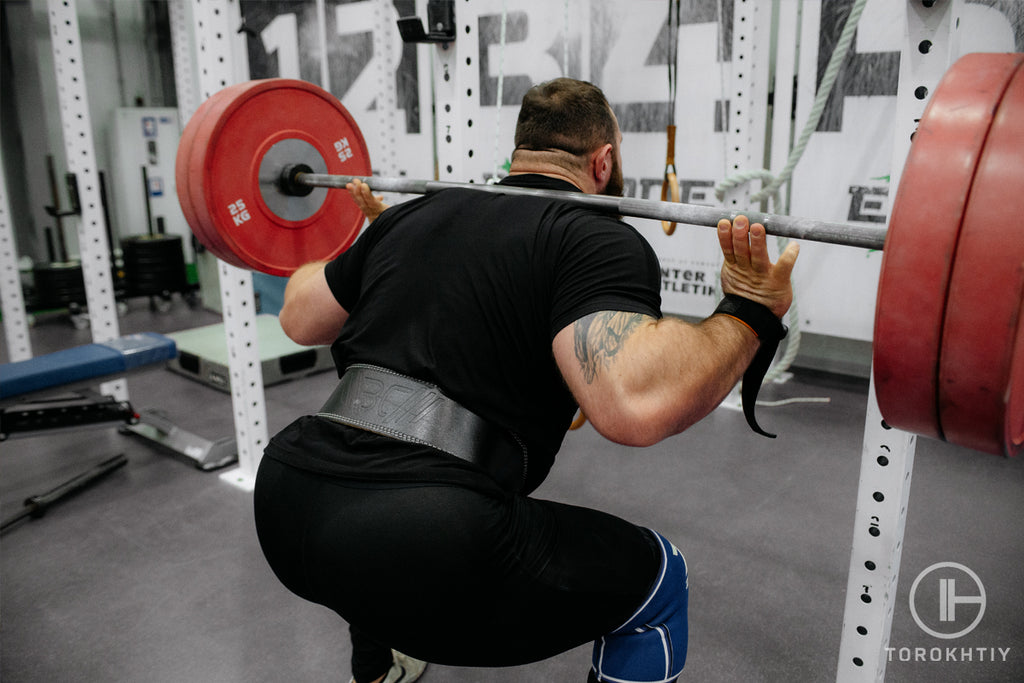
🔻FREE OLYMPIC WEIGHTLIFTING PROGRAM
Get started on your weightlifting journey with the Torokhtiy Free Olympic Weightlifting Program! Perfect for beginners, this FREE 2-week program focuses on Snatch and Clean & Jerk techniques. Suitable for all levels, it’s designed for muscle and technical preparation.
Download now for FREE!
FAQ
Are Olympic lifters stronger than powerlifters?
Olympic lifting will place a higher focus on leg strength, particularly the quadriceps, than powerlifting, but powerlifting tends to create greater chest strength for the barbell bench press than required by Olympic lifters. Powerlifters can lift more in basic lifts (Squat, Bench Press, Deadlifts) and weightlifters can lift more weight overhead.
Is Olympic lifting safer than powerlifting?
All of the exercises in Olympic lifting are done overhead, which, if done incorrectly, can add to the pressure on your back. Powerlifters exercise with extremely large weights, which puts additional strain on their joints. Maintaining proper form is crucial to avoiding sports injuries.
Which is better: powerlifting or Olympic lifting?
Powerlifting vs Olympic lifting are two weight training activities that improve fitness, strength, and focus. The two exercises known as the Snatch and Clean & Jerk are the foundation of Olympic lifting. Both of these overhead lifts require strong form and technique to be successful. The Squat, Deadlift and Bench Press, are exercises used in powerlifting. Compared to Olympic lifting, powerlifting is much less technical and employs greater weights. So it is up to decide what is better for you.
Why is powerlifting not an Olympic sport?
Powerlifting has been trying to get into the Olympic Games for many years, but so far this has not happened. There is no exact answer why. But there are suggestions that this is due to the huge number of federations in this sport, as well as the lack of unity in the position on the standards for the use of equipment.
Conclusion
Both Olympic Weightlifting and Powerlifting are competitive kinds of sports and awesome physical activities that emphasize becoming stronger on essential compound lifts. Any person would benefit from including either Olympic lifts or powerlifting lifts in their workout programs for the best strength, conditioning, and power, despite the distinctions between the two. Are you a powerlifting or weightlifting team? Did I overlook something essential? Comment and we can chat!
Why Trust Us?
With over 20 years in Olympic Weightlifting, our team does its best to provide the audience with ultimate support and meet the needs and requirements of advanced athletes and professional lifters, as well as people who strive to open new opportunities and develop their physical capabilities with us.
By trusting the recommendations of our certified experts in coaching, nutrition, dietology, and sports training programming, as well as scientific consultants, and physiotherapists, we provide you with thorough, well-considered, and scientifically proven content. All the information given in the articles concerning workout programming, separate exercises, and athletic performance, in general, is based on verified data. We ensure that you can rely on our professionals’ pieces of advice and recommendations that can be treated as personalized ones which will benefit you and fully meet your needs.
The product testing process is described in more detail here
Author: Sergii Putsov
Head of Sport Science, PhD
Best Results: Snatch – 165 kg,
C&J – 200 kg
Sergii Putsov, Ph.D., is a former professional weightlifter and National team member, achieving multiple medals in the 94 kg weight category at national competitions. With a Master’s degree in “Olympic & Professional Sport Training” and a Sport Science Ph.D. from the International Olympic Academy, Greece, Sergii now leads as the Head of Sport Science. He specializes in designing training programs, writing insightful blog articles, providing live commentary at international weightlifting events, and conducting educational seminars worldwide alongside Olympic weightlifting expert Oleksiy Torokhtiy.

